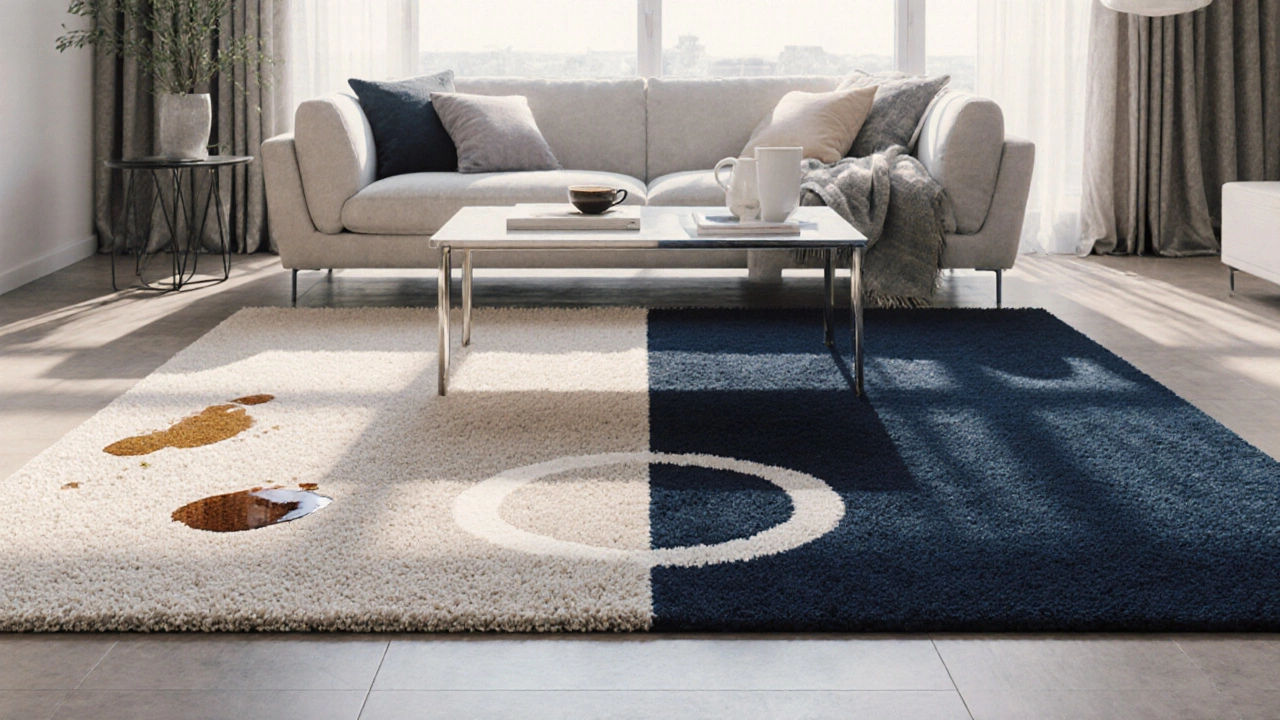When looking for a stain‑resistant rug, a floor covering designed to repel spills and hide everyday dirt. Also known as stain‑proof rug, it helps keep homes tidy without constant vacuuming. A good durable rug fibers, materials such as nylon, polypropylene and wool that resist wear and stains form the backbone of any reliable option. If you have a busy kitchen, a hallway with kids, or a pet‑friendly living room, you’re essentially looking for a high‑traffic rug, a rug engineered to handle frequent footfall and accidental spills. The choice of fiber directly influences how easy it is to keep clean, which brings rug cleaning methods, techniques like spot‑cleaning, steam‑cleaning or professional shampooing into the decision‑making process.
First, match the rug’s material to the room’s demands. Nylon offers excellent resilience and is widely used in commercial settings, making it a top pick for entryways. Polypropylene is budget‑friendly, water‑resistant and holds colour well, perfect for family rooms where spills are common. Wool, while pricier, provides natural stain‑repellent properties and feels luxurious underfoot – a solid choice for formal spaces. Next, consider the rug’s construction. Loop‑woven designs (like Berber) tend to trap less dirt than cut‑pile styles, which can hide stains in the fibers. Pile height also matters: low‑pile rugs are easier to vacuum and dry quickly after cleaning, whereas high‑pile rugs add comfort but may require more upkeep.
Budget plays a role, too. According to recent market data, the average cost of a good quality rug in 2025 ranges from £150 for a small synthetic piece to upward of £1,200 for a large wooled floor covering. When you factor in durability, a higher‑priced wool rug might actually save money over time because it lasts longer and needs fewer replacements. Look for manufacturer warranties that cover stains, as this can indicate confidence in the rug’s performance. Finally, test the rug’s slip resistance if you’re placing it on hardwood or tile – a non‑slip backing prevents accidents, especially in households with children or elderly members.
Keeping a stain‑resistant rug looking fresh is simpler than you think. Promptly blot any liquid with a clean cloth; avoid rubbing, which can push the stain deeper. For routine cleaning, a vacuum with a rotating brush works well on low‑pile synthetics, while a gentle shampoo or a steam‑cleaner clears grime from wool without damaging the fibres. Some owners swear by a mixture of mild dish soap and warm water for spot‑treatments – just test on a hidden area first. Rotation every six months helps even out wear, extending the rug’s life. If a stubborn stain does appear, professional cleaning services often have specialized solvents that won’t harm the rug’s backing.
Armed with the right material knowledge, price expectations, and care routine, you’re ready to pick a rug that stays fresh through daily life. Below you’ll find articles that dig deeper into each of these topics – from material comparisons and cost breakdowns to step‑by‑step cleaning guides – so you can make a confident choice and keep your floors looking great.Choosing the Right Stain‑Resistant Rug for Your Space

Discover which rug colors hide dirt best, learn how material and hue affect maintenance, and get practical tips for a cleaner, longer‑lasting floor covering.
